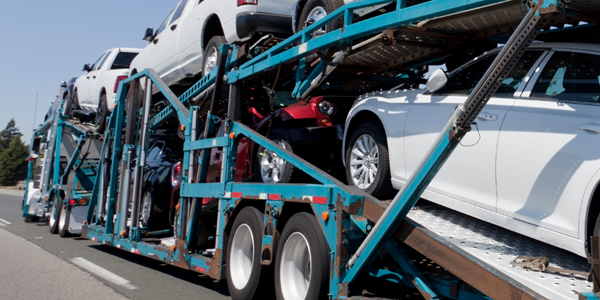This year, in the space of two weeks, two major hurricanes struck the United States — the first time in recorded history that the country has been hit with storms of such intensity in the same hurricane season. In late August, Harvey hit the Houston area leaving major floods all along — and well past — the Gulf Coast. In September, Irma raked the whole of Florida, leaving destruction in its wake. Natural disasters are something every dealership needs to prepare for, so this month, we’re asking our Dealer Panel — two of which were directly affected by Irma — what they do to prepare for disasters and get back up and running afterwards.
AutoSuccess: How do you prepare for the worst at your dealership? What plans do you have in place to protect inventory and get back up and running?
 Andrew DiFeo, GM of Hyundai of St. Augustine: Being in Florida, we’ve been through enough hurricanes that we have a hurricane preparedness checklist. We’re in a location where our inventory isn’t in danger of flooding, but we do move it away from any fences or trees that could lead to flying debris. Internally we take steps to protect all the computer equipment, and anything else that’s plugged in, from power surges. As far as getting back up and running, we communicate to our employees via email when we’re going to be closed, when we anticipate we’ll reopen and most of all to stay vigilant for themselves, because our first concern is employee safety. Once the danger has passed, we want to get our employees are back within a reasonable amount of time to assess any damage and to put a game plan together of getting things back to normal. A lot of that is dependent on if the dealership has power, phones and Internet. We’ve been through enough of these where it’s almost a routine for us now.
Andrew DiFeo, GM of Hyundai of St. Augustine: Being in Florida, we’ve been through enough hurricanes that we have a hurricane preparedness checklist. We’re in a location where our inventory isn’t in danger of flooding, but we do move it away from any fences or trees that could lead to flying debris. Internally we take steps to protect all the computer equipment, and anything else that’s plugged in, from power surges. As far as getting back up and running, we communicate to our employees via email when we’re going to be closed, when we anticipate we’ll reopen and most of all to stay vigilant for themselves, because our first concern is employee safety. Once the danger has passed, we want to get our employees are back within a reasonable amount of time to assess any damage and to put a game plan together of getting things back to normal. A lot of that is dependent on if the dealership has power, phones and Internet. We’ve been through enough of these where it’s almost a routine for us now.
 Chris Saraceno, VP and Partner of Kelly Automotive Group: The first thing we do is have a meeting with the team leaders to discuss our strategy. In that meeting, we talk about what would happen in our best- and worst-case scenarios. Of course, the most important thing is the safety of our team members and their families. We find out who lives locally and could help out and, if they are staying, make sure we have their home and cellphone numbers so we can check on them. The next step, now that the team and families are protected, is figuring out how we can best protect the dealership and our inventory, because that’s how we make our living. For Irma, we took a look at these scenarios and parked all the inventory we could, the most expensive inventory inside in our shops. After that, we walked around the lot. Since we’ve been at Kelly Ford in Melbourne for 43 years, we’ve been through hurricanes before and we know which areas get flooded; now we can move the inventory to the higher areas. We also want to move them close to each other. The closer they are together, the less damage will be done — it protects the inventory on the inside of the pack.
Chris Saraceno, VP and Partner of Kelly Automotive Group: The first thing we do is have a meeting with the team leaders to discuss our strategy. In that meeting, we talk about what would happen in our best- and worst-case scenarios. Of course, the most important thing is the safety of our team members and their families. We find out who lives locally and could help out and, if they are staying, make sure we have their home and cellphone numbers so we can check on them. The next step, now that the team and families are protected, is figuring out how we can best protect the dealership and our inventory, because that’s how we make our living. For Irma, we took a look at these scenarios and parked all the inventory we could, the most expensive inventory inside in our shops. After that, we walked around the lot. Since we’ve been at Kelly Ford in Melbourne for 43 years, we’ve been through hurricanes before and we know which areas get flooded; now we can move the inventory to the higher areas. We also want to move them close to each other. The closer they are together, the less damage will be done — it protects the inventory on the inside of the pack.
As for the business, we know there are four or five key people who are going to stay, and they’re the first responders who will go in and check on the store and help get us back up and running. They realize that if they don’t do that, it might be two or three days before we get back to making a living. We’ve learned to expect times like this — this will be the fifth or sixth one we’ve been through in the past 15 or 20 years.
 Mike Good, GM of Street Toyota: The key word is “preparation.” There’s no substitute for being ready for the worst. Challenge your leadership to help you define “the worst.” We immediately think of floods, tornados and other acts of nature. Let your mind wander for a moment. “Assets and inventory” worthy of protection include vehicles, structures, information and associates. We’ve considered the natural disaster occurrences. We also have contingent plans for active shooter, IT hacking and other man-made disasters. Deliberations should include redundancy, communication, extra-ordinary processes, delegation, associate and customer safety, information security, inventory movement, protection and preservation, along with potential “what if” scenarios. Expecting the unexpected — then preparing for it — makes great sense.
Mike Good, GM of Street Toyota: The key word is “preparation.” There’s no substitute for being ready for the worst. Challenge your leadership to help you define “the worst.” We immediately think of floods, tornados and other acts of nature. Let your mind wander for a moment. “Assets and inventory” worthy of protection include vehicles, structures, information and associates. We’ve considered the natural disaster occurrences. We also have contingent plans for active shooter, IT hacking and other man-made disasters. Deliberations should include redundancy, communication, extra-ordinary processes, delegation, associate and customer safety, information security, inventory movement, protection and preservation, along with potential “what if” scenarios. Expecting the unexpected — then preparing for it — makes great sense.
AS: What steps do you take to ensure that your used inventory hasn’t been in a flood or other event where damage might be hidden?
AD: We do the usual title check reports, with Carfax or AutoCheck, and then all of our used inventory is run through our shop, where they check for frame damage or suspected flood damage there. For us, it’s not common at all. Most of our vehicles are taken in from trade or off-lease. We don’t buy as much at the auctions. A simple background check and a run through the shop will catch any problems, but it’s a very rare occurrence for us. After 10 years of being here in St. Augustine, we might have had only one vehicle come through like that.
CS: We do the typical Carfax and AutoCheck for a vehicle history report. We look at the VIN and look up as much information as we can. Because we›ve been through flood damage before, every vehicle that goes through the Kelly Automotive Group receives a 160-point inspection. There are some really clear signs if a car’s been through a flood. You notice rust on the undercarriage where there normally isn’t rust. When you pull the seats, you see it. Once it goes through the 160-point inspection, any water damage is obvious. Our technicians have years of experience finding damage. It’s easy to spot.
MG: Carfax, along with state and federal documentation, often lags 30 days or more as post-sale information. Selling more than 3,000 pre-owned vehicles annually requires we adhere to stringent processes. We do the following:
1. Visual inspections on all locally acquired vehicles before completing the transaction.
2. Utilize post-sale inspections on all auction-purchased vehicles.
3. Utilize a “No Damage Disclosure” form on sight-unseen appraisals.
4. Pull Carfax on every vehicle acquisition.
5. Check the National Motor Vehicle Title Information System (NMVTIS) and pull up the state title history as necessary.
6. Use up to 15 common inspection criteria looking for flood and body damage evidence.
Diligent purchasing cuts cost and preserves profit.
Dealer Panel









